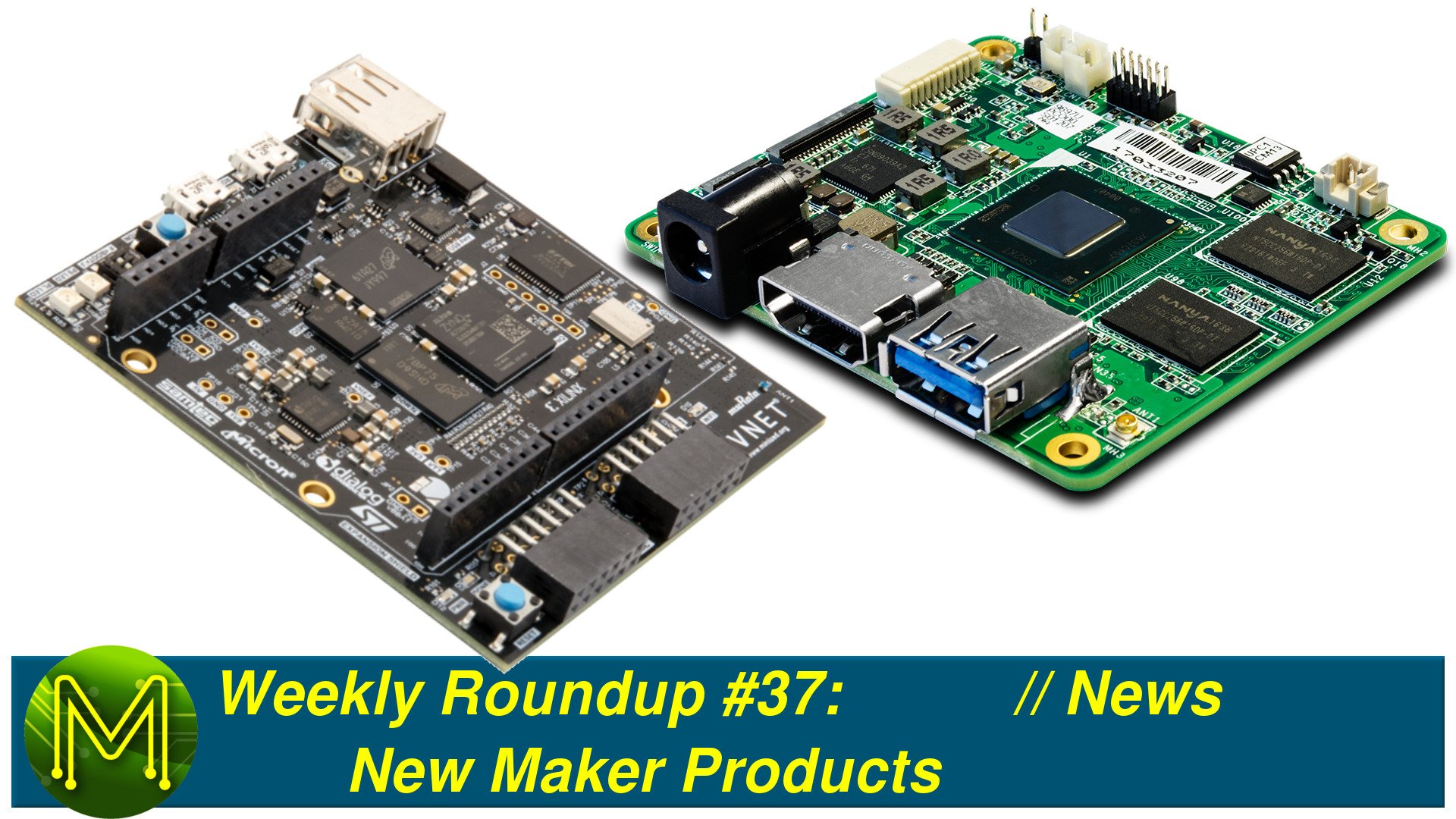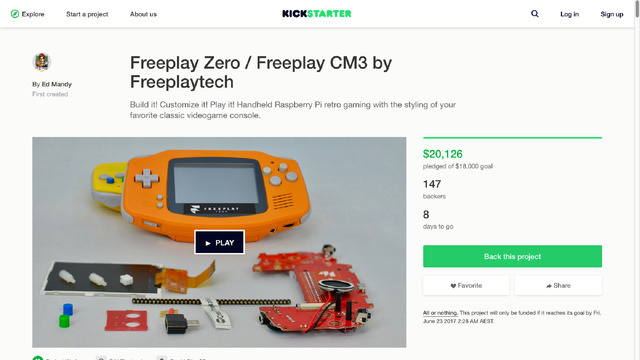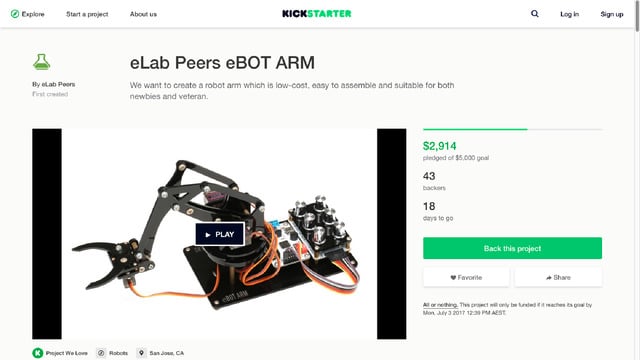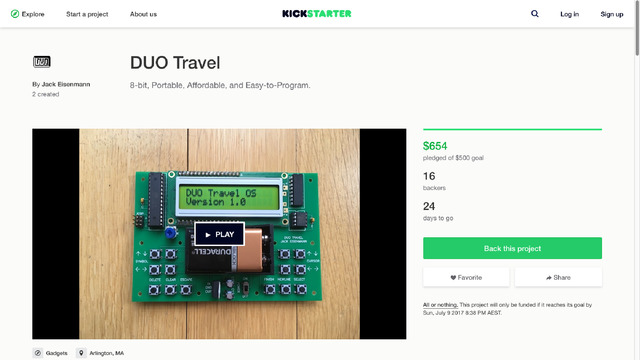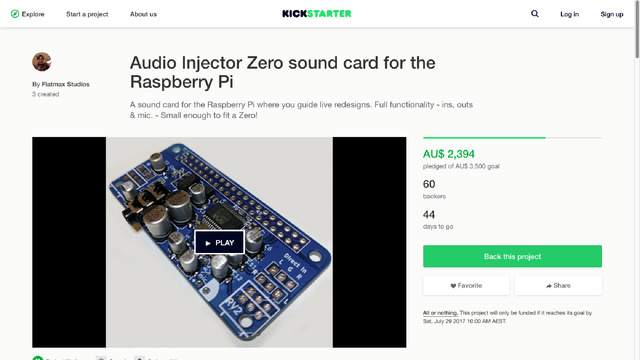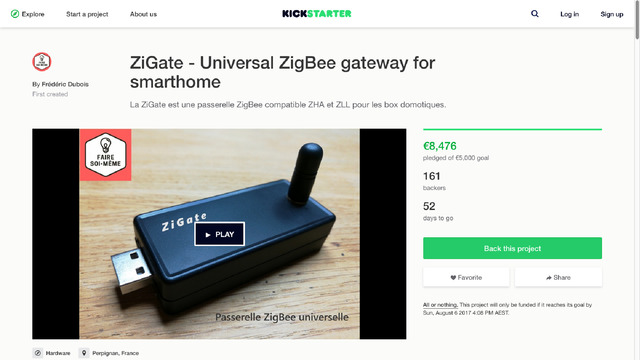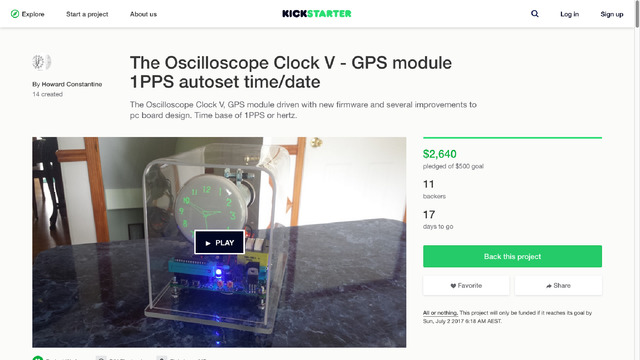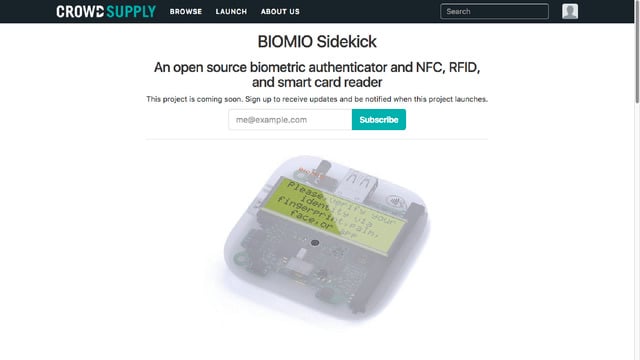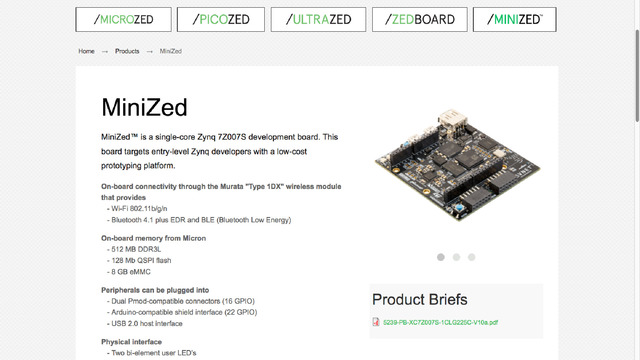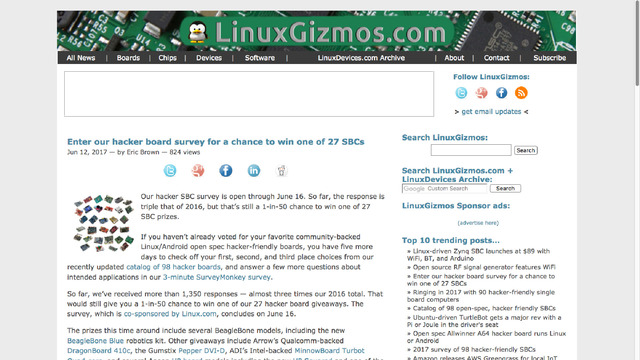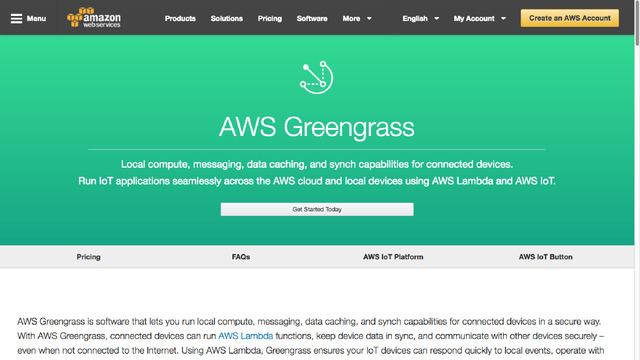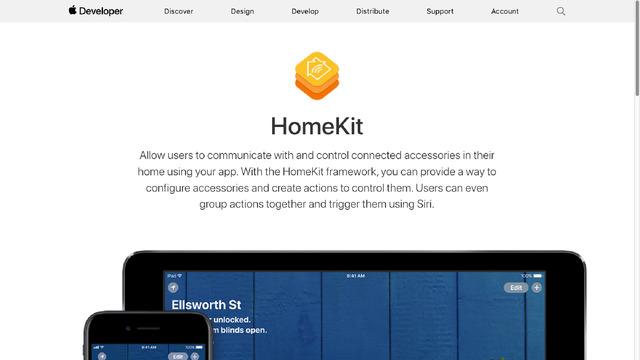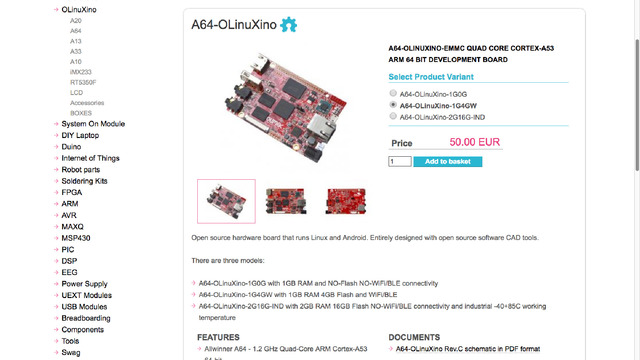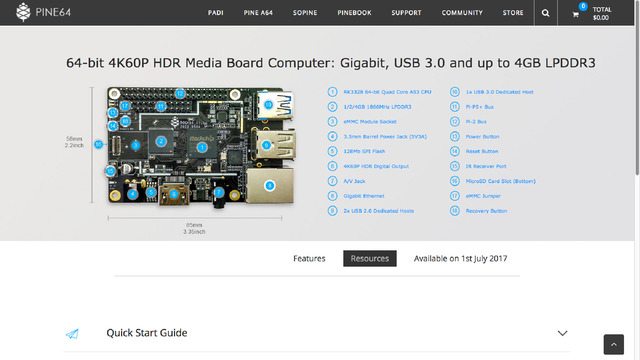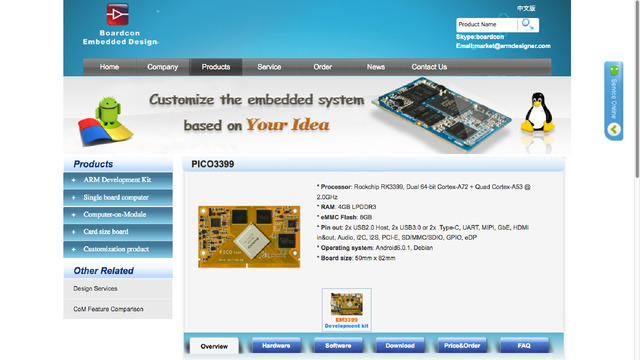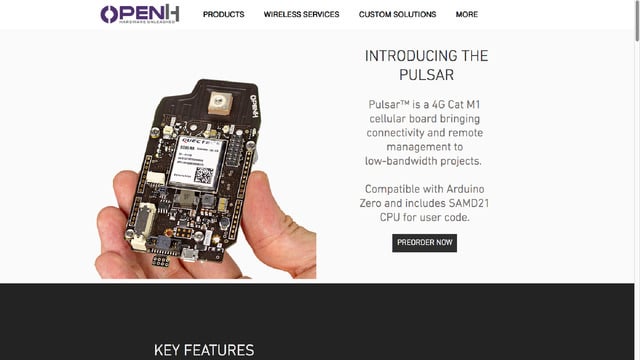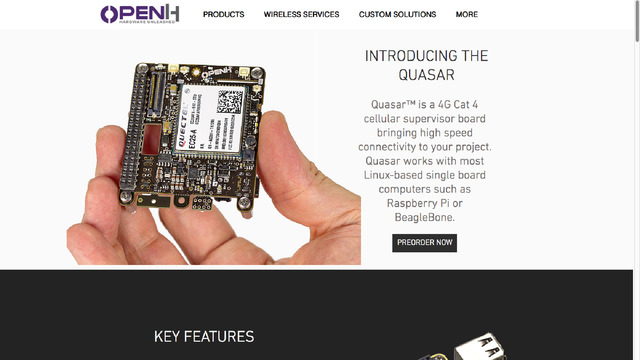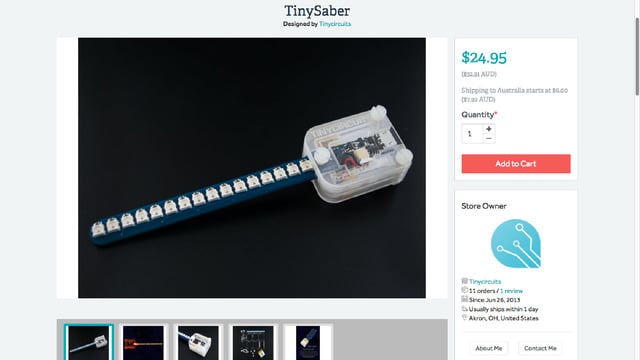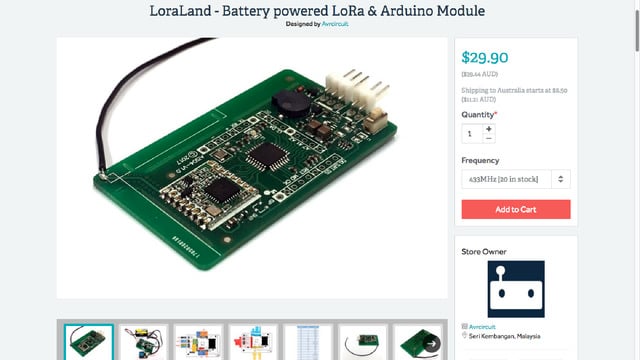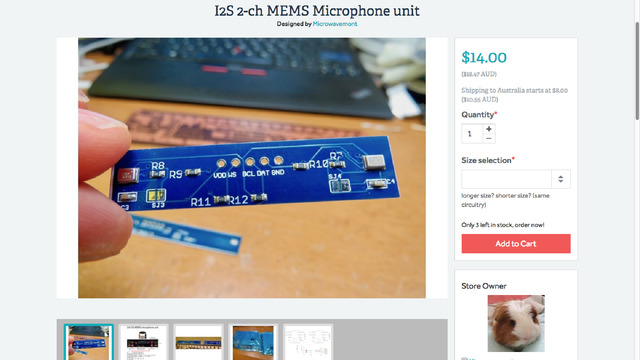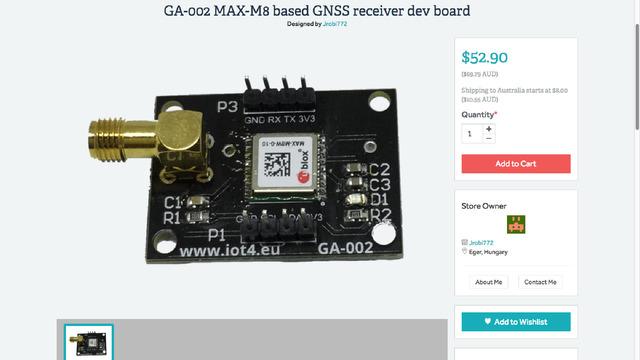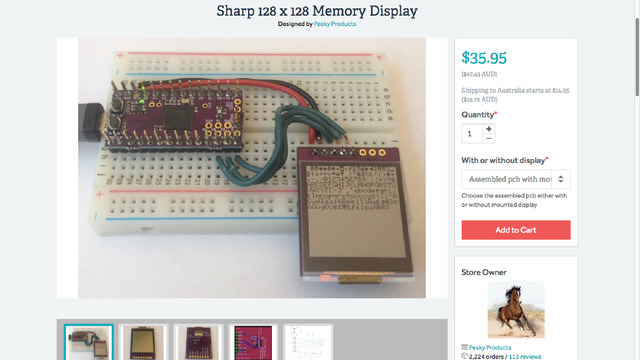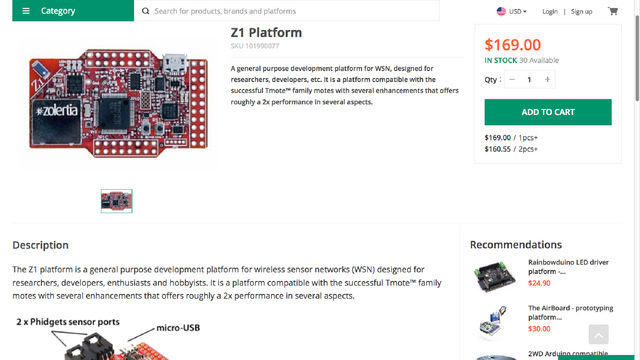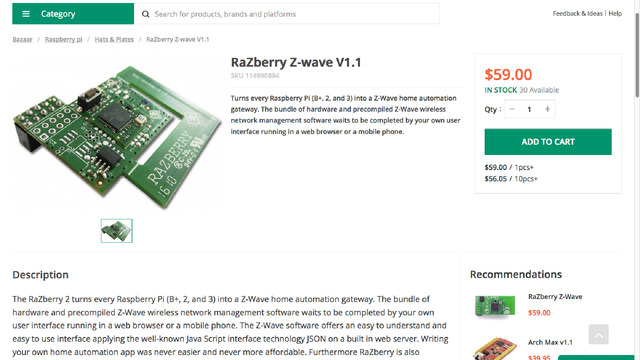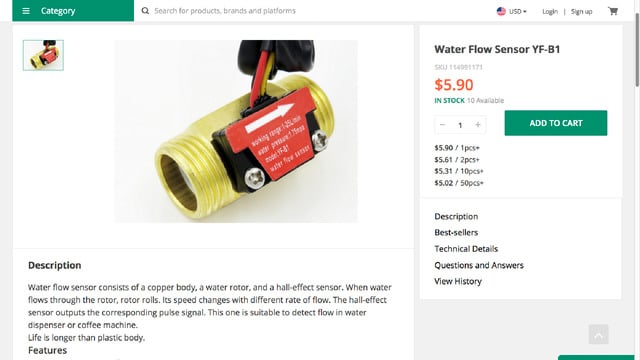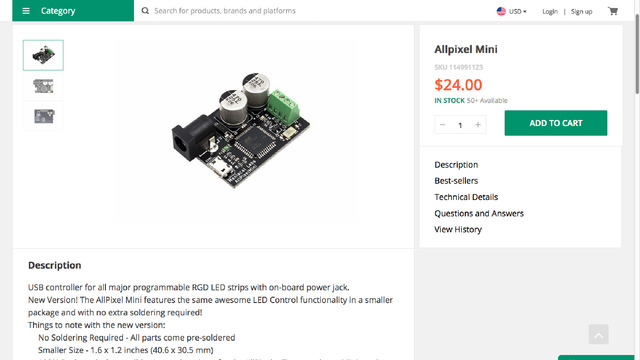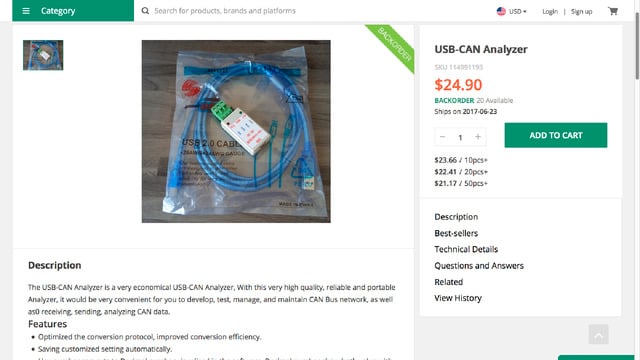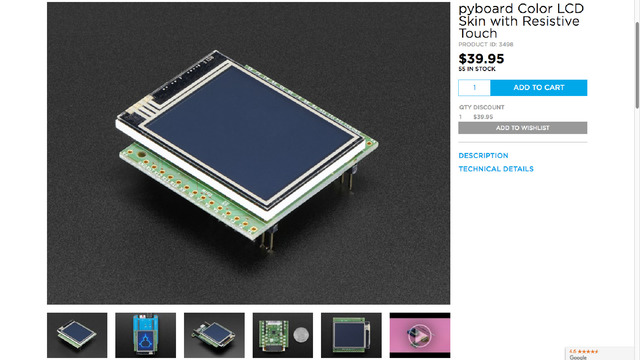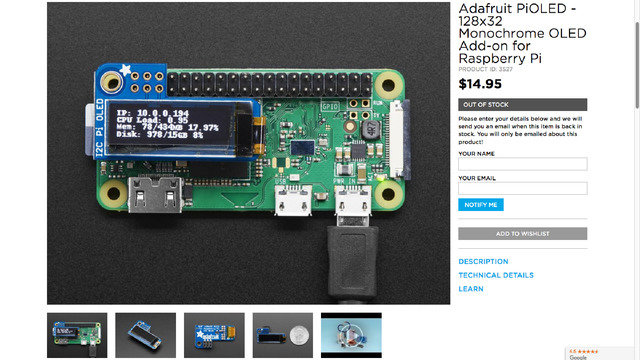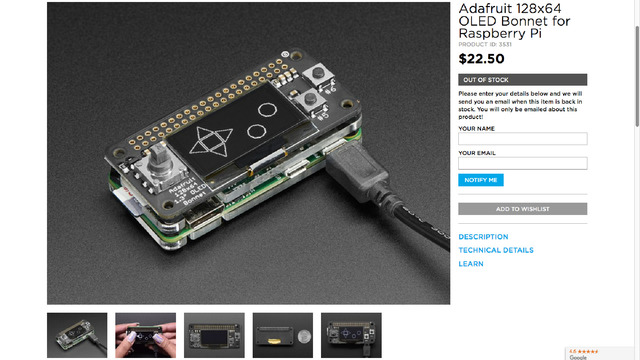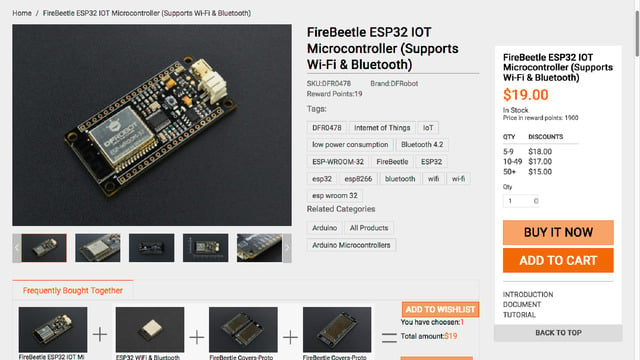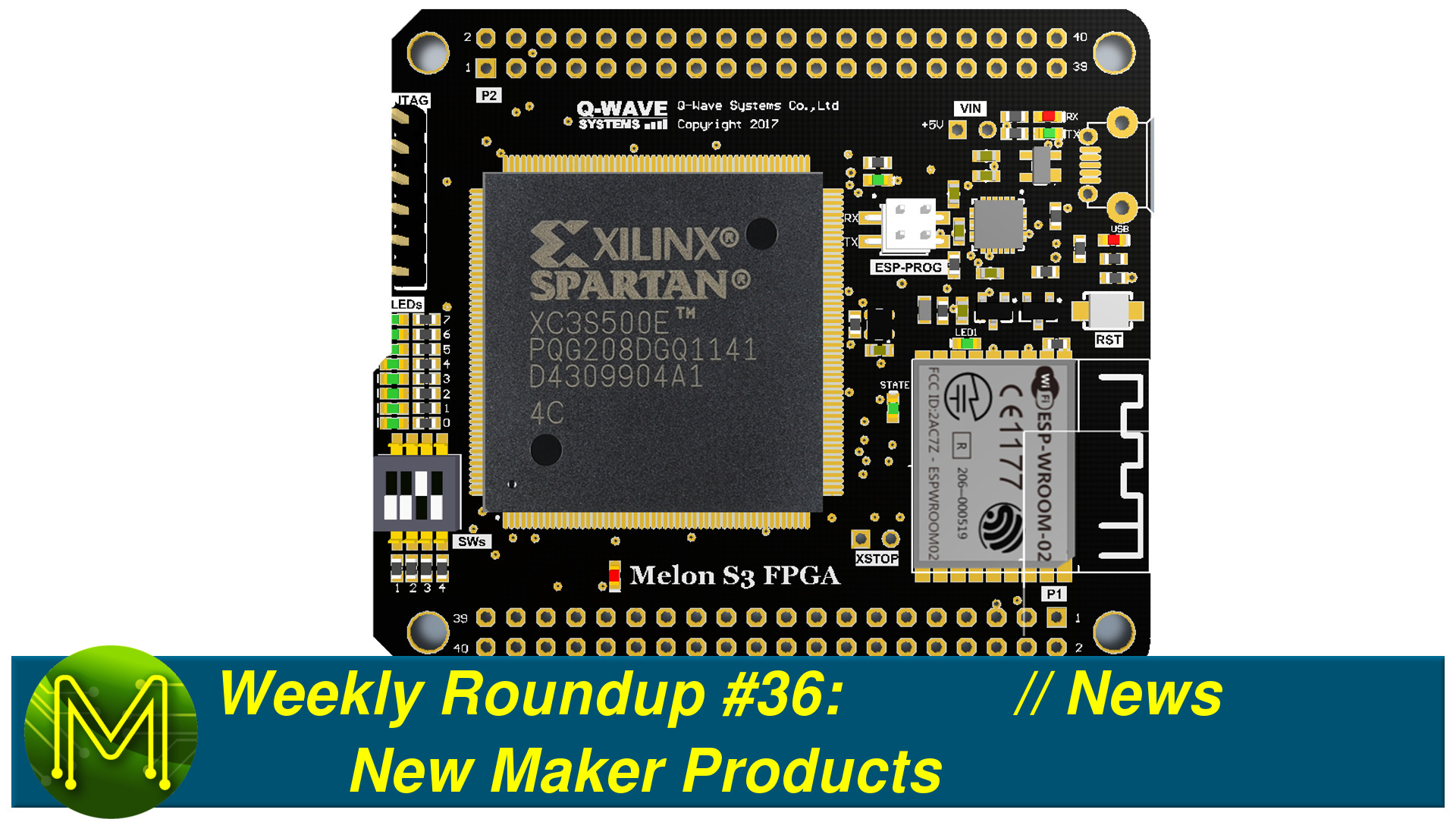Weekly Roundup #37 - New Maker Products // News
This week’s Weekly Roundup there’s a number of new SBCs announced as well as a battle between several companies wanting to dominate the IoT market.
Crowd Funding
KickStarter
First up on Kickstarter, there’s …
Freeplay Zero
the Freeplay campaign is a kit that allows you to build a handheld RetroPi device. There’s two models; the Freeplay Zero, which runs on the Pi Zero and the Freeplay CM3, which uses the Pi3 Compute Module. The Freeplay Zero kit comes with these bits, but you’ll need to supply these. The Freeplay CM3 is apparently still in prototype stage.eLab Peers eBOT ARM
The eBOT arm is a small robotic arm built around what looks like SG90 servos, a CSR Bluetooth module, 8 channel servo controller, 6 knobs for control and an Einsboard, which is in an Arduino form factor. Looks like a simple but well planned product.UP Core
Of course I just missed the Up Core campaign in my last Weekly Roundup.The Up guys are stepping up the pace with this new board and are starting to be the main driving force behind x86 based SBCs. Based on the quad core Intel Atom x5-Z8350 CPU, with 1, 2 or 4G RAM, 16, 32 or 64G eMMC, HDMI, eDP, WiFi, Bluetooth, USB2.0, USB3.0, RTC, PCIe2 and all the usual GPIO options via a 100pin docking connector. It’s powered by DC jack and has a well needed fan connector. All in a tiny 66x56 mm board at 69 euros for the 1G module.
DUO Travel
The Duo Travel is a good idea if you want to do some coding on the run. Contains an ATmega328 with, 16 by 2 LCD screen and 32KB of EEPROM. They have their own pseudo programming language, with a few maths primitives to code up some basic programs.Audio Injector Zero
This would interest one of my subscribers. The Audio Injector Zero is a sound card that fits on to the Pi Zero. Has stereo in and out via RCA connectors and electret mic that you’ll need to source and solder yourself. Capable of handling 96kHz 32bit audio.Chazwazza
At the other end of the spectrum is the Chazwazza, which is a self contained 2 port vector network analyzer. The price looks steep, but is actually pretty decent considering these types of devices cost a whole lot more. Capable of a number of graphs such as dB magnitude, Smith Charts and Voltage Standing Wave Ratio. If you’re in to RF, might be worth checking out.ZiGate
While we’re on RF. The ZiGate is a USB to ZigBee gateway. Contains a USB to TTL board attached to a ZigBee module. Capable of talking to a range of Home Automation products already such as; Pluzzy, Philips, Osram and IKEA.The Oscilloscope Clock V
A nice bit of retro for this next one. This creator has made several of these. He’s now back with version 5 of his oscilloscope clock. This new version contains a GPS module for accurate time syncing. There’s several pledges; from just the control board all the way up to a fully assembled clock.IndieGoGo
And IndieGoGo has nothing really. Shame.
Crowd Supply
Crowd Supply does, though.
BIOMIO Sidekick
The BIOMIO Sidekick is in pre-launch status and provides biometric sensing, NFC, RFID and smart card reader. Could be potentially used in door locks or password protection. No more details apart from that.Honorable mentions
MiniZed
I mentioned in a previous Weekly Roundup the MicroZed board, which was a small board based around the Zynq-7000 FPGA. Zedboards have now added the MiniZed to it’s lineup selling for around $89 US compared to the $199 US of the MicroZed. Contains WiFi, Bluetooth, 512M DDR3 RAM, 128Mb flash, 8GB eMMC, Arduino compatible headers, along with two PMOD connectors, motion sensing and microphone. This is great to see and is hopefully the start of a flood of FPGA boards.Linux Gizmos competition
Over at Linux Gizmos they are running their yearly competition for the hacker board survey. There’s 27 SBCs up for grabs and all you have to do is answer a 3 minute survey. Nice.TurtleBot3
What does Ubuntu and turtles have in common? Nothing really except if you’re talking about the TurtleBot3. These are pretty expensive starting at $549 US all the way up to $1800 US, but if you’re heavily in to robotics, then the on-board Intel Joule and Pi3 along with LiDAR, OpenCR, RealSense and SLAM algorithms.AWS Greengrass for Linux
We’re starting to see a bit of a fight now between Google, Apple, and Amazon with grabbing the IoT market. I mentioned in a Weekly Roundup last year that Amazon released a preview of AWS Greengrass, but it has now been officially released. It supports a range of boards from DragonBoard, Pi3, Artik and Advantech and handles all the messaging, caching and compute power in the AWS cloud.HomeKit Accessory Protocol Specification
While Apple have now officially recognized that people want to hack around and have opened up the HomeKit specification. Essentially not much has changed except you can now use HomeBridge without violating Apple’s terms and conditions.A64-OLinuXino
Another Allwinner A64 board has joined the ranks of 64bit boards. This one coming from OLinuXino, which has 1 or 2GB RAM, SD slot, 4 or 16GB eMMC, HDMI, USB2.0, all the usual GPIO options, GbE with optional WiFi module and power from DC jack, or LiPo. Coming in at around 50 euros it’s a decent board.NXP i.MX7 SoM
CompuLab have a new NXP MX7 SoM with a unique feature. It has a flexible cable connecting two boards that can be folded on top of each other. Great for reduced space requirements. Contains the dual core Cortex-A7 and Cortex-M4 cores, 2GB RAM, 64GB eMMC, GbE, WiFi, Bluetooth, all running off a 3.2 to 4.5 volt Li-Ion battery. This thing is tiny at 30 by 27 by 8 mm.Rock64
Remember the Pine64? Well the Pine64 guys have now come out with a new SBC based on the Rockchip RK3328 with 1 to 4GB DDR3 RAM, eMMC socket, SD slot, 128Mb flash, USB2.0 and USB3.0 ports, GbE and a standard 40 pin GPIO header, and an additional 22 pin GPIOs all in the same Pi form factor, but with a few differences that shouldn’t affect putting this thing in a Pi case. Also, power is from a DC jack which is a good move.PICO3399
Here’s another Rockchip based board. This one based on the RK3399, which is a dual core Cortex-A72 and quad core Cortex-A53. It also has 4GB DDR3 RAM, 8GB eMMC flash, SD, USB2.0, USB3.0, 2 USB-C GbE, HDMI, eDP and PCIe. This is the DIMM board which fits into the main board. No indication of pricing, but it’ll probably be expensive.Huawei source code Kirin960
One of the issues with newer SoCs is the writing of software that supports them. In a good move by Huawei, they have released the kernel sources for their Mate 9 smart phone. Why is is this great? The Mate 9 runs the Kiren 960 SoC which means development on boards such as the HiKey960 will ramp up significantly.Pulsar
OpenH have a few new 4G modules. The Pulsar is a an Arduino shield with 4G LTE, GPS, on-board antenna, Bluetooth, NFC and also a SAMD21 MCU. Not only can you use it on an Arduino, but you can mount a Pi Zero onto it. Even supports 4G OTA re-programming.Quasar
Then there’s the Quasar, which is the same module, but designed for Raspberry Pi or BeagleBone.Maker Shops
Tindie
There’s a few interesting things over at Tindie this week.
TinySaber
If you’re in to Star Wars or just flashy LED sticks in general the TinySaber is a, well a stick of LEDs, but also with ATtiny841 MCU, LiPo and a snazzy case to fit it all in.Tiny Arcade Kit
From the same Tindie store is the Tiny Arcade. Which is a kit to build your own, er Tiny Arcade. Contains an ATmega, OLED and some buttons to mash when playing Invaders, Flappy Bird. Oh man, Wolfenstein 3D? I’m feeling sick now.LoraLand
Here’s another LoRa board that also contains an ATmega328. It breaks out all the GPIOs and allows you to connect to any LoRaWAN near you.I2S 2-ch MEMS mic
Here’s a board from Microwavemont that contains 2 I2S based MEMs mics.Teensy VL53L0X
There’s a number of boards based on this VL53LoX time of flight chip. This one allows you to connect it to any version 3 Teensy.WiFi Deauther
Now I don’t condone this, but this next board allows you to cause a lot of mischief. It allows you to disconnect WiFi clients on an access point using the well known de-auth attack. The end result is that the target device won’t be able to access the WiFi network and you don’t even need to be connected to the access point.MAX-M8 based GNSS rec
If you want some decent navigation, then this board allows you to connect to GPS, Galileo, GLONASS or BeiDou simultaneously.Sharp 128 x 128 Memory Display
This is a different type of display. It’s not quite eink and not quite LCD, but has the advantages of both. That is; the low power of eink and the fast refresh rates of LCD. At 1Hz refresh rate it draws only 10uA.uBoost Single AA to 3.3v supply
If you’re in need of a tiny inverter to power your 3.3v MCU, then this small one looks good. Can supply a steady 3.3 volts from a 0.8 to 3.6 volt supply with an adjustable current up to 100mA.Opto-isolated USB-FTDI
There’s times when you need to opto-isolate your FTDI connection. Especially when dealing with Sonoff devices. If you don’t want to worry about frying the USB on your PC, get one of these.AdaFruit, Seeed, SparkFun, DFRobot, DigiKey
Loitor Cam2pc Visual-Inertial SLAM
Seeed have this pretty interesting camera module with inbuilt IMU that is similar to the PixyCAM. It handles all the grunt work of keeping track of objects whilst the device is moving. Contains a 6050 IMU and dual CMOS camera capable of analyzing at up to 65 FPS over USB.Z1 Platform
The Z1 platform is a development board aimed at wireless sensor networks and runs a MIPS CPU with 8KB RAM, 92KB flash, Bluetooth CC2420 and can be powered from coin cell, double As or USB. Also has on-board Phidget sensors.RaZberry Z-wave
The RaZberry is a board that will turn your Pi into a Z-Wave gateway. Runs the Sigma Designs ZM5202 transceiver with a range of 150m outdoors or 100m indoors.Water Flow Sensor YF-B1
Seeed also have a bunch of water flow sensors, like this hall effect one capable of sensing up to 25L/min.Water Pressure Sensor G1/4 1.2MPa
Or this water pressure sensor able to measure up to 2.4Mpa.Allpixel Mini
Want any easy way of controlling LED strips? This board allows you to control all the popular strips from a USB port. Also has on-board DC jack so you don’t have to fiddle around with powering them.USB-CAN Analyzer
This CAN analyzer looks pretty good. Can send or receive CAN baud rates up to 1M and has integrated surge protection. Good for if you want to roll your own vehicle OBD device.pyboard Color touch LCD
Over at AdaFruit they have a 160 by 128 pixel colour LCD with resistive touch that connects to a pyboard and can handle a 30 fps update.Adafruit PiOLED - 128x32 mono OLED
Or this small 128x32 OLED that connects to a Pi Zero. Runs the SSD1306 chipset and only uses the I2C bus.Adafruit 128x64 OLED
Or this 128x64 OLED using the same chipset, but with two buttons and small 5 way joystick.Qwiic Water-Resistant OLED
Over at SparkFun they have a Qwiic based water resistant OLED display which is encased in resin to avoid moisture getting in.ESP32 Thing Power Control Shield
If you have an ESP32 Thing, then this power shield will allow you to power it from a wide 5 to 28 volt DC supply. There’s also three MC33926 motor drivers capable of driving a 30A load. If you’re drawing that sort of current make sure you whack on some heatsinks.FireBeetle ESP32
DFRobot have a range of ESP32 based products called the FireBeetle. This one is the ESP32 board with on-board LiPo management,FireBeetle Covers-Gravity I/O Expansion Shield
and then you have this Gravity I/O shield.HyperPixel for Pi
Looking for a hi-res TFT display for your Pi? Pimoroni have the HyperPixel, which is a 3.5", 800 by 480 pixel capacitive touch display capable of 60 fps. Bolts straight on to any Pi. This uses the DPI interface to allow it to get those blazing speeds.The Cheap Side
Over in China there is…
MPU6050 + STM32
an all-in-one IMU board from BangGood. Contains an MUP6050 IMU and STM32 running a Kalman Filter giving you a fairly accurate motion board.5.8GHz 3W/4.5W Wireless AV Transmitter
If you want to blast the air-waves then this board can boost a 5 to 6 GHz signal at 4.5W, which is a frequency used for such things as wireless cameras.6V 2W Photovoltaic Charger Solar Panel
This is something I could have used on my letterbox. It’s a 6v, 2W solar panel with on-board regulator that spits out a constant 5v on a USB socket. Can be used to charge your mobile phone. Maybe.STM32 Emulator Debugger CMSIS-DA
If you are in to STM32s, then this cheap debugger might come in handy. The only issue I see with it is that it only support a Windows desktop.PLCC28 To DIP24
If you want to play around with some SMDs, but don’t want to solder, then get some of these. This one can accept a PLCC28 and convert to a plain DIP24 format. Or this one will allow you to solder up SMDs and break out into a DIP16 format.Mini Step up 0.8-5v to 5v
This is a handy boost converter, that’ll step up a 0.8 to 5v DC input to a steady 5 volts.433Mhz mini ASK transmitter
Or if you’re in to ASK RF modulation, then you can pick up 20 of them for around 50c each.SIM5360E 3G Shield
EleCrow have a SIM5360E 3G shield, which is quad band with on-board RTC and supports assisted GPS. Runs off a 5 to 12 volt DC input with a 1mA sleep mode.FM1702SL RFID Reader Writer
ICstation have a number of RFID breakouts, with a variety of interfaces, like SPI or UART.3.12'' 256x64 SSD1322 OLED
Or if you’re looking for a decent sized OLED, there’s this 3.1" 256 by 64 yellow OLED based on the SSD1322 accessible over SPI and powered from 3 to 5 volts.2.42'' 128x64 SSD1309 OLED
Or this 2.4" 128 by 64 OLED based on the SSD1309.FS-VMP-27 voice recorder/player module
This is unusual. A record-able sound module that can be powered from 7 to 24 volts and can record and playback MP3 samples.4MB recordable voice module
Or this one running off a 7 to 12 volt supply.Waveshare 296x128 2.9'' eink
DX have this 3.5" resistive touch LCD screen running from the HDMI port of the Raspberry Pi. It’s a 480x320 pixel display that they claim can do software translation up to 1080p.Waveshare 3.5'' touch LCD
They also have this 2.9" 296 by 128 pixel eink display driven via SPI, but is only 3.3v logic level compliant.Honorable mentions
A few bits and pieces that I didn’t include in my video. Some are good, some are bad. Caveat Emptor.

